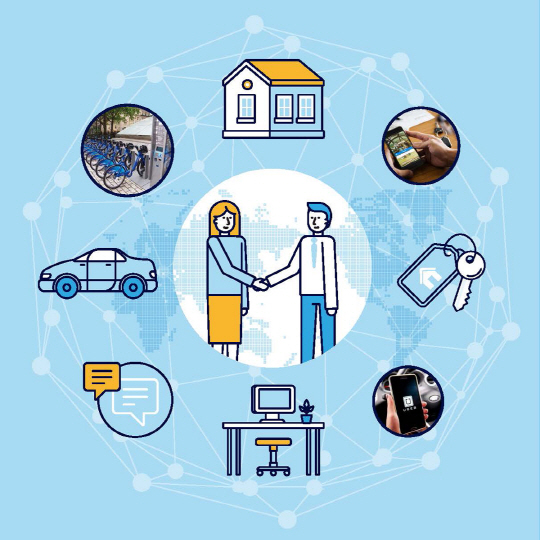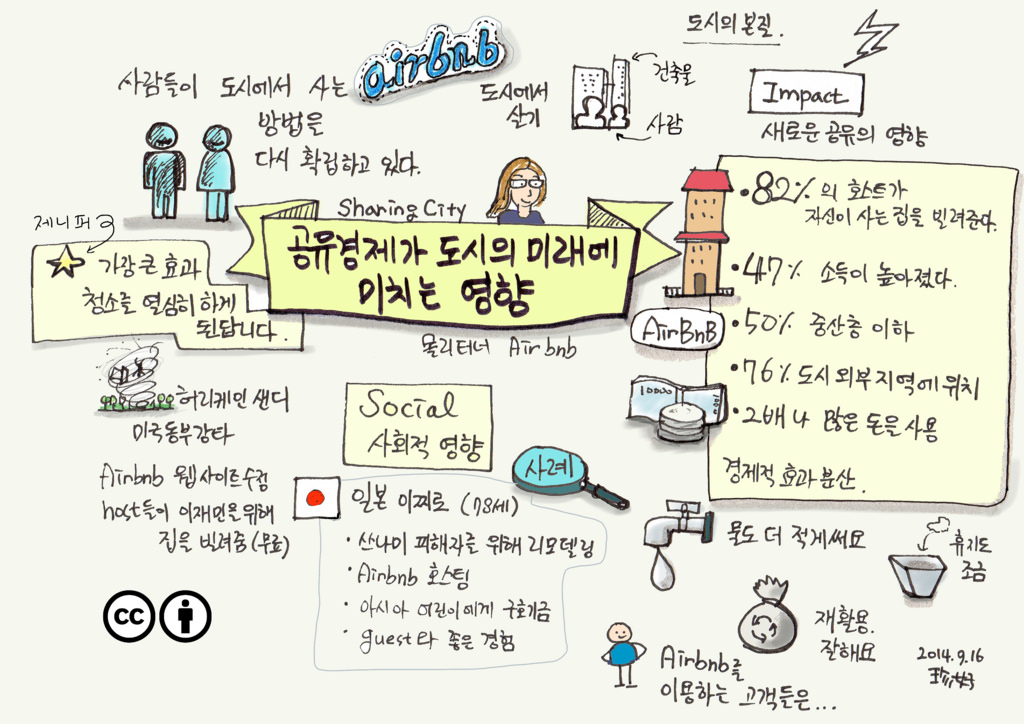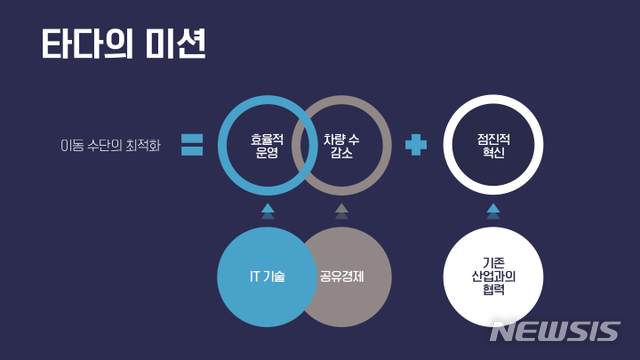List
Story > NEWS > Detail
[Resources] Characteristics of Shared Economy Classification
There are several socioeconomic factors in collective consumption, the emergence of a shared economy, or the reemergence. Many cite a recession following the global financial crisis in the late 2000s as the main background of the shared economy. They say the recession has created a need to save on living expenses and requires a different lifestyle than before. One pillar of social response to recession was a new interest in the community, which led to the resurgence and organization of several forms of new community.
Recently, a growing number of consumers are looking for reasonable spending as a long-term economic slowdown has dampened consumer sentiment. In addition, as social media such as Facebook and Twitter have spread and information sharing between individuals has become more seamless, consumers have emerged as the main players in the market economy. This social trend led to a shared economy in which several products were produced are shared, and a new economic system was established based on cooperation and co-prosperity.

Shared economies can find characteristics through classification according to transaction subject, digital matching perspective and collaborative consumption perspective.
First, the characteristics of a shared economy by transaction entity can be found through classification by transaction entity. The Federal Trade Commission classified the key participants in the sharing economy marketplaces into three groups: platform operators, buyers and sellers that provide the market. Buyers and sellers in the shared economy system use the shared economy platform, where buyers and sellers are mostly peer-to-peer transactions. Thus, such network transactions place the supplier on an equal footing with the consumer so that it can enter into a transaction. Platform operators that operate the shared economy market are in charge of transactions between suppliers and consumers, and can receive financial benefits for trading operations. Thus, both suppliers and consumers are consumers of the platform operator in the shared economy market, and the shared economy has the characteristics of a multi-sided platform that contrasts with the typical form of consumers and supplier entities in the traditional market.

Local studies have also shown that individuals and entities can become business-to-business (P2P) entities by expanding the basic players in the form of a shared economy into peer-to-peer (P2P), business-to-consumer (B2C), consumer-to-consumer (C2B), business-to-business (B2B).
Second, because the shared economy is a system in this digital connection, the United States Department of Commerce also defines a shared economy as the Digital Matching Firmms. The shared economy is characterized by enabling transactions through information and communication technologies through inter-party platforms and apps, and how to increase user confidence and reduce risk depends on user-generated assessment scores and reputation data. In addition, although there are some types of transactions between operators and users, the forms of transactions are more common and numerous between individuals or between individuals and people-to-person, and workers who wish to provide labor for profit are independent, for-profit search contractors, who can set work hours autonomously and have all the human and physical responsibilities of workers during their service.

Third, Botsman & Rogers (2010) classified the four key elements of establishing a shared economy as "Critical Mass," "Idling Capacity," "Belief in the Commons," and "Trust Beven Strangers" and "Conservative Economy" in a three-pronged way. Botsman & Rogers (2010) categorizes three methods: Product-Service System, Re-distribution System and Collaborative Lifestyle. The Product-Service System approach is a rental-focused service that borrows and uses goods and facilities if necessary, thereby increasing the value of use that is a benefit of the product and reducing physical personal consumption, and is a typical example of a Zip car.

The re-distribution system reduces waste resources by using the practice of redistribution through barter among consumer actors in a way that creates a market where objects that are not discarded or utilized can be exchanged. The Collaborative Lifestyle approach is a form of collaborative consumption by trading entities with similar interests and interests in our lifestyle, with a representative type-working space for utilizing the types and intangible resources held by individuals, individuals and businesses, and a talent sharing as an intangible resource.

We looked at the characteristics of the shared economy as well as the reasons for the development of the shared economy. It is also true that there are various interpretations and opinions about features, as a common economy is a term that has yet to be established theoretically. Nevertheless, by briefly learning about the characteristics of the shared economy, discussions on the possibility of future development are also likely to be possible.
There are several socioeconomic factors in collective consumption, the emergence of a shared economy, or the reemergence. Many cite a recession following the global financial crisis in the late 2000s as the main background of the shared economy. They say the recession has created a need to save on living expenses and requires a different lifestyle than before. One pillar of social response to recession was a new interest in the community, which led to the resurgence and organization of several forms of new community.
Recently, a growing number of consumers are looking for reasonable spending as a long-term economic slowdown has dampened consumer sentiment. In addition, as social media such as Facebook and Twitter have spread and information sharing between individuals has become more seamless, consumers have emerged as the main players in the market economy. This social trend led to a shared economy in which several products were produced are shared, and a new economic system was established based on cooperation and co-prosperity.

Shared economies can find characteristics through classification according to transaction subject, digital matching perspective and collaborative consumption perspective.
First, the characteristics of a shared economy by transaction entity can be found through classification by transaction entity. The Federal Trade Commission classified the key participants in the sharing economy marketplaces into three groups: platform operators, buyers and sellers that provide the market. Buyers and sellers in the shared economy system use the shared economy platform, where buyers and sellers are mostly peer-to-peer transactions. Thus, such network transactions place the supplier on an equal footing with the consumer so that it can enter into a transaction. Platform operators that operate the shared economy market are in charge of transactions between suppliers and consumers, and can receive financial benefits for trading operations. Thus, both suppliers and consumers are consumers of the platform operator in the shared economy market, and the shared economy has the characteristics of a multi-sided platform that contrasts with the typical form of consumers and supplier entities in the traditional market.

Local studies have also shown that individuals and entities can become business-to-business (P2P) entities by expanding the basic players in the form of a shared economy into peer-to-peer (P2P), business-to-consumer (B2C), consumer-to-consumer (C2B), business-to-business (B2B).
Second, because the shared economy is a system in this digital connection, the United States Department of Commerce also defines a shared economy as the Digital Matching Firmms. The shared economy is characterized by enabling transactions through information and communication technologies through inter-party platforms and apps, and how to increase user confidence and reduce risk depends on user-generated assessment scores and reputation data. In addition, although there are some types of transactions between operators and users, the forms of transactions are more common and numerous between individuals or between individuals and people-to-person, and workers who wish to provide labor for profit are independent, for-profit search contractors, who can set work hours autonomously and have all the human and physical responsibilities of workers during their service.

Third, Botsman & Rogers (2010) classified the four key elements of establishing a shared economy as "Critical Mass," "Idling Capacity," "Belief in the Commons," and "Trust Beven Strangers" and "Conservative Economy" in a three-pronged way. Botsman & Rogers (2010) categorizes three methods: Product-Service System, Re-distribution System and Collaborative Lifestyle. The Product-Service System approach is a rental-focused service that borrows and uses goods and facilities if necessary, thereby increasing the value of use that is a benefit of the product and reducing physical personal consumption, and is a typical example of a Zip car.

The re-distribution system reduces waste resources by using the practice of redistribution through barter among consumer actors in a way that creates a market where objects that are not discarded or utilized can be exchanged. The Collaborative Lifestyle approach is a form of collaborative consumption by trading entities with similar interests and interests in our lifestyle, with a representative type-working space for utilizing the types and intangible resources held by individuals, individuals and businesses, and a talent sharing as an intangible resource.

We looked at the characteristics of the shared economy as well as the reasons for the development of the shared economy. It is also true that there are various interpretations and opinions about features, as a common economy is a term that has yet to be established theoretically. Nevertheless, by briefly learning about the characteristics of the shared economy, discussions on the possibility of future development are also likely to be possible.



